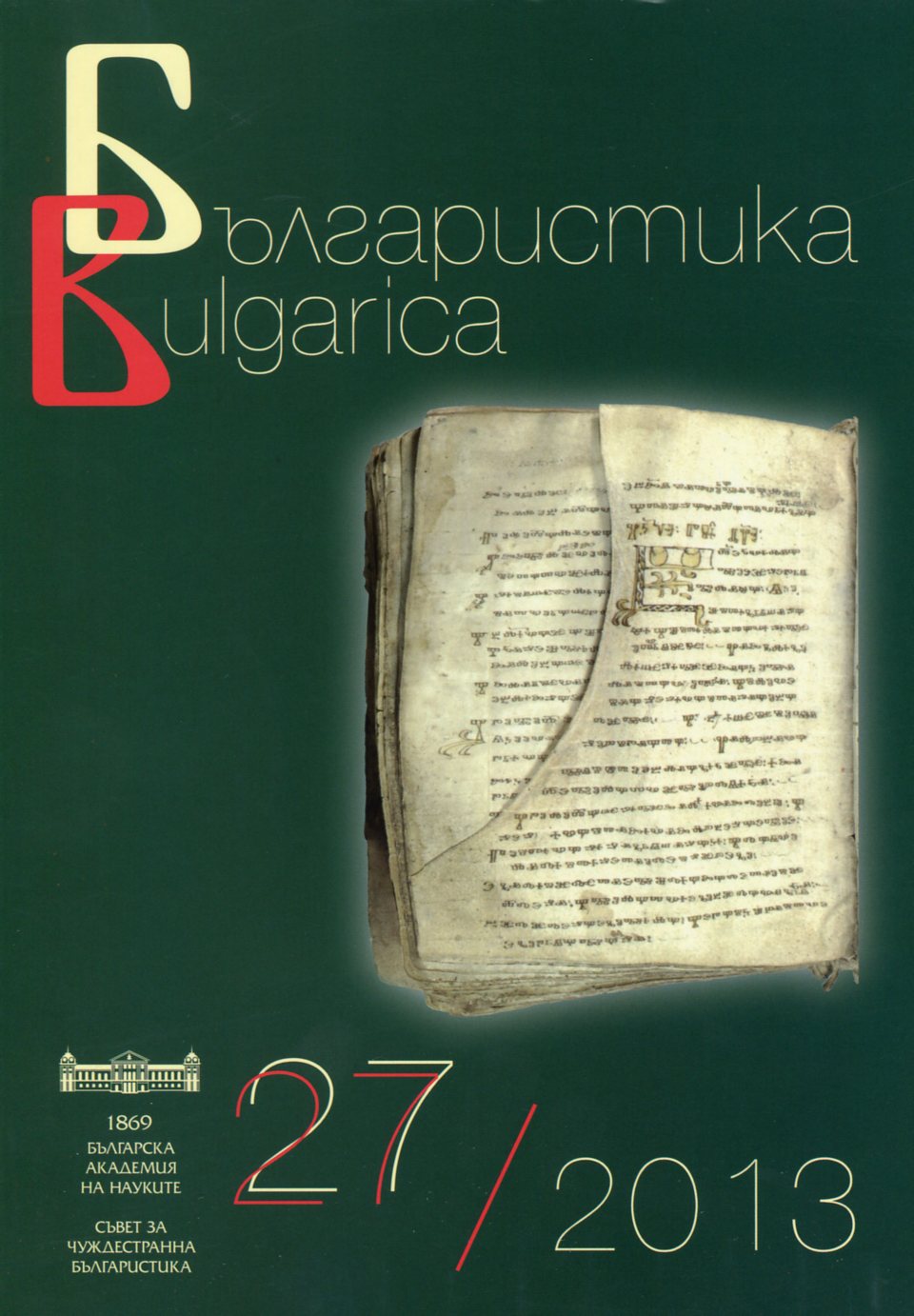
Дисертации
Defended PhD theses in Bulgaria in the field of linguistics, literature, history, folklore, ethnography and art studies
More...We kindly inform you that, as long as the subject affiliation of our 300.000+ articles is in progress, you might get unsufficient or no results on your third level or second level search. In this case, please broaden your search criteria.

Defended PhD theses in Bulgaria in the field of linguistics, literature, history, folklore, ethnography and art studies
More...
Более полувека назад замечательный историк русской литературы XVIII столетия П. Н. Берков пообещал опубликовать написанное Михаилом Матинским (1750–1820) и никогда не издававшееся либретто оперы Василия Пашкевича «Тунисской Паша»: «Текст ее <пьесы. – А.Л.> будет напечатан мною в одном из ближайших выпусков сборника „XVIII век“ »1. Обещание, однако, осталось не выполненным. Известный П. Н. Беркову и, похоже, единственный сохранившийся список этого драматического сочинения2 остался лежать в Театральной библиотеке в Санкт-Петербурге.
More...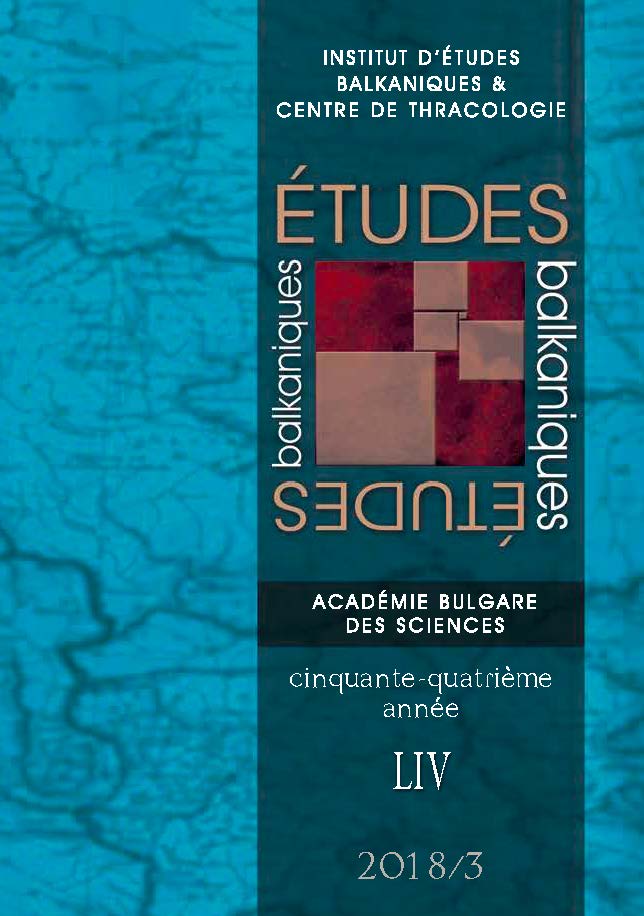
Salonica was the centre of the national idea in the Ottoman Empire, which distinguished it essentially from the cosmopolitan Ottoman cities along the Asia Minor coast. The Bulgarians had a significant role to play in the political and ideological ebullience that had gripped the city in the first decade of the 20th century. Its representatives were among the most prominent proponents of the national, socialist and anarchist idea that inevitably influenced the Jewish community in the city. Even though its Jewish population did not identify itself with the national-liberation aspirations of the Christian population, the proximity of the Balkan nation states and particularly of Bulgaria had a tangible effect on the city and predetermined its fate.
More...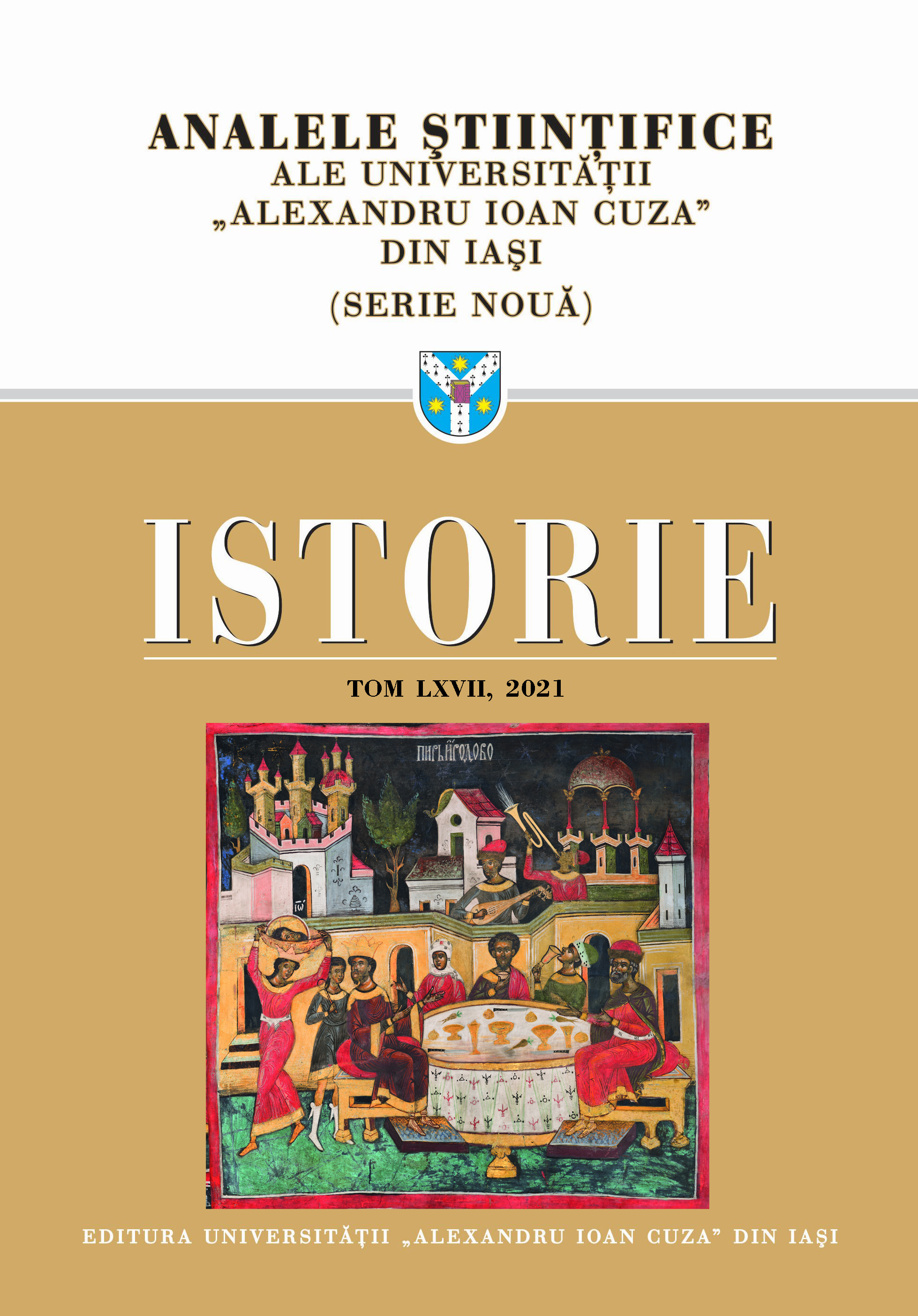
The Yugorock of the 70s-90s was not rejected a priori by the regime, as it occurred in the other socialist countries. The Communist Party believed that it was harmless as long as the authorities monitored it closely. The outbreak of the civil war in 1991 coincided with the “cultural” debut of turbofolk in Serbia and Serbian territories throughout Yugoslavia. It was characterized as a suburban culture movement, “tasted” by uneducated supporters of Slobodan Milošević’s style and that abounds in elements of kitsch by promoting peripheral messages such as “war glamour”, “greedy is cool”, “get rich quickly”, able to fascinate a decomposing society. In the last decade of the 20th Century, the hostile historical context turned Serbia of Slobodan Milošević into the victim of a predominant cultural “narcissism”, where certainties were eliminated and where the infallibility of the new Leader tended to become immanent.
More...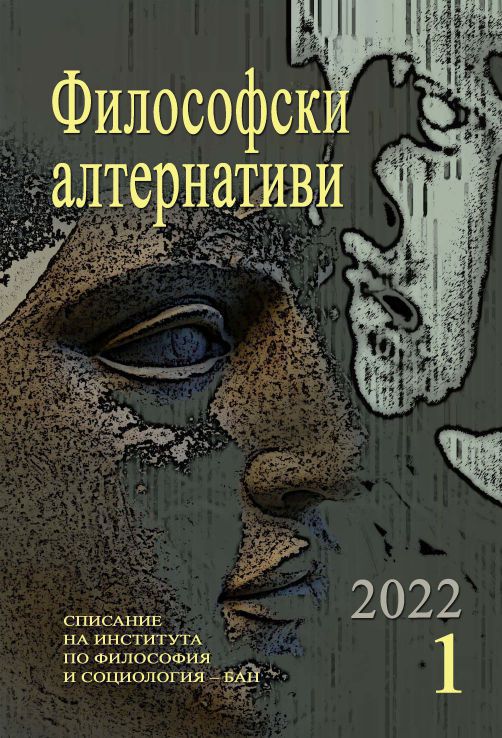
After 1989, the construction of industrially built residential blocks in residential complexes in Sofia was stopped. Until then, for two or three decades, they were the most important production for the construction of residential buildings in the capital according to the principles of modernism. Thousands of homeless people eagerly awaited them to be sheltered. Confusion ensued after the political changes in 1989, when attempts were made to implement the laws on the restitution of agricultural land within the complexes, despite the fact that these were “projects with implementation” and according to the Restitution Law no changes could be made there. The complexes, as well as the other constructions in progress, only had to be completed according to their designs. But it did not happen. In many places, “illegal restitution” of private agricultural land has begun, as well as spontaneous “privatization” of municipal and state lands and new construction in violation of the projects for the development of residential complexes. Their physical and social environment has changed radically and as a result the quality of life in them has deteriorated sharply. Thirty years after 1989, the residential complexes of Sofia have dramatically moved away from the principles of modernism and are almost everywhere in spatial and social degradation. An intensive process of anti-modernism is under way. Only recently the Sofia Municipality decided to introduce a policy to improve the living conditions of citizens in these territories – will it be able to realize and develop it and is it not too late?
More...

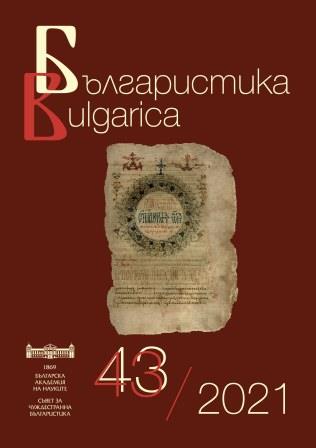
Defended Ph.D. theses in Bulgaria in the field of linguistics, literature, history, folklore, ethnography, and art studies
More...
Data about scientific events in the field of the humanities in Bulgaria in 2021
More...






In this paper, the motif of wedding in the novel Nečista krv (Impure Blood), by Borisav Stanković is analysed from the viewpoint of erotological theory of George Bataille. The wedding is observed as a celebration resulting in psychoerotic release of the individual. The erotica manifested here has a key role in profiling two different cultures, the urban culture and the rural culture, personified in the Effendi Mita’s and Gazda Marko’s families. By comparing the urban and rural weddings, distinctive erotic features of the two cultures are perceived, as well as differences in character and aim of the celebration.
More...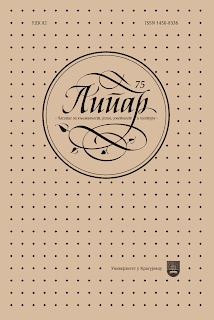
À travers une perspective multidisciplinaire, basée sur les connaissances historiques et pointant vers de nouvelles recherches sur le patrimoine culturel et historique des Juifs de Belgrade et de Paris, il s’agit de souligner les similitudes et les différences dans l’existence, la préservation et la présentation du patrimoine juif dans deux environnements géographiquement éloignés, historiquement et socialement différents. L’objectif est de tenir compte du contexte historique, culturel et artistique du patrimoine culturel juif historique et la question inextricablement liée de l’Holocauste. L’article cherche à lancer une discussion sur le Bataclan, le quartier juif de Paris, et Dorcol, une partie de Belgrade où les noms de rue témoignent de la vie de la communauté juive. Le but de l’article n’est pas seulement de comparer et de souligner le lien, mais aussi de promouvoir la diversité du patrimoine culturel de la France et de la Serbie.
More...
L’œuvre historique de Charles de Gaulle a-t-elle eu de l’influence sur les événements politiques en Serbie? La réponse est oui, même plus qu’on ne le pense. Le parallélisme du comportement politique pendant la Seconde Guerre mondiale du général Milan Nedić avec celui du maréchal Philippe Pétain et du colonel Dragoljub Draža Mihajlović avec celui du général de Gaulle est fascinant. Les deux militaires serbes ont été formés par l’armée française. Comme Pétain, le général Nedić a décidé de se soumettre à l’occupant en créant un État serbe fantoche. Comme de Gaulle, le général Mihajlović est convaincu de la victoire des Alliés, refusant la capitulation et décidant de continuer le combat. La constitution gaulliste de la V République de 1958 a-t-elle inspirée les rédacteurs de la constitution serbe de 2006 ? Dans une certaine mesure oui, mais peut-être pas assez. Voici une analyse du rapport des Serbes face au gaullisme.
More...
The paper presents the life and work of Eugene of Savoy, a famous military leader at the turn of the 17th and 18th centuries, whose achivements left a mark in the history of numerous countries, from Austria, through Germany, Italy and France, to Serbia. The biography of Prince Eugene has a mutinational, “pan-European” char- acter, bearing in mind that he came from an Italian family (princes of Savoy), that he was raised in the environment of the French royal court, and that he served three Habsburg emperors (Leopold I, Joseph I and Charles VI). Napoleon considered Eugene one of the seven greatest commanders of history.The article contains presentation of young years and military career of Prince Eugene, especially during the Great Turkish war (1683-1699) and after, includin presantation of crucial battles of Zenta (1687), Petrowaradin (1716) and Belgrade (1717). The Prince’s fame was secured with his decisive victory against the Ottomans at the Battle of Zenta in 1697, earning him Europe-wide fame. The Battle of Zenta proved to be the decisive victory in the long war against the Turks. Renewed hostilities against the Ottomans in the Austro-Turkish War consolidated his reputation, with victories at the battles of Petrovaradin (1716), and the decisive encounter at Belgrade (1717). Of all Eugene’s wars this was the one in which he exercised most direct control; it was also a war which, for the most part, Austria fought and won on her own. The war had dispelled the immediate Turkish threat to Hungary and was a triumph for the Empire and for Eugene personally. In the period after the Second World War, during the period of growing popularity of European integration and cooperation, as well as supranational ideas, there was a reinterpretation of the historical role of Eugene Savoy as an archetypal character “pan-European”, “hero of European culture”, “builder of Europe”. The period of the Austro-Turkish wars in which Prince Evgenije participated and his great victories over the Turks had an exceptional influence and significance on the history of the Serbian people (Great Migration 1690). A large number of Serbs also took part in the campaigns and battles led by Eugene of Savoy.
More...
Uglješa Šajtinac zeigt im Drama Das Banat (2007) das proble- matische Zusammenleben von Donauschwaben (Joseph, Erwin und Magdalena Wolf) und Serben (Dobrivoje, Đuđa, Svetislav) im Banat während des Zweiten Weltkrieges. Im Kontext von historischen Umwälzungen und politischen Konflikten versuchen die Figuren im Drama entweder die alte kollektive Identität zu bewahren oder eine neue zu bilden, und ihre Kohäsion mithilfe verschiedener Kategorien festzulegen: Geschlechts (Geschlechtsidentität), Territoriums (territoriale Identität), Klasse (ge- sellschaftsökonomische Identität), Religion (religiöse Identität), Nation (nationale Identität), sowie Politik (politische Identität) und Kultur (kulturelle Identität). Aus- gehend von der Theorie des britischen Historikers der Soziologie Anthony D. Smith (1939–2016), eines der Begründer der Nationalismusforschung, werden in diesem Aufsatz im Kontext des Chronotopos des besetzten Banats (1941–1945) unter- schiedliche Manifestationen der kollektiven Identität untersucht, mit dem Ziel, die Kohäsionskraft dieser Kategorien aufzuklären. Ergebnisse der Analyse zeigen dass Geschlecht, Territorium, Klasse und Nation nicht einen genügend starken Grad der Kohäsion aufzeigen und die Figuren, die auf diesen Kategorien ihre Identität auf- gebaut haben, könnten sich in den neuen Zeiten nicht erhalten, im Unterschied zu denen, die sich für Politik und Kultur entschieden haben, die die Grenzen der Zeit und des Raums überschreiten und eine stärkere Verbindung unter den Figuren her- stellen. So können Dobrivoje und seine Schwester als Kommunisten im neuen Staat fortleben, während andere Figuren sterben oder das Banat verlassen müssen, um eine neue Heimat in der Weite auszusuchen, in der die kulturellen Elemente wie Kunst (Film und Musik) und Fremdsprachen die Verbindung unter den Menschen sichern, trotz den ethnischen und anderen Unterschieden.
More...